The Influence of the Moon on Earth’s Tides: Unraveling the Mystery Behind the Ebb and Flow
Tides have fascinated mankind for centuries, captivating our imagination with their rhythmic rise and fall. But have you ever wondered what truly governs this mesmerizing phenomenon? Look no further than the celestial body that hangs in the night sky, casting its ethereal glow upon our planet – the Moon. In this article, we will delve into the intricate relationship between the Moon and Earth’s tides, examining the gravitational forces at play and uncovering the profound influence of lunar phases. Join us on this voyage of discovery as we explore the hidden dynamics that shape our planet’s coastal landscapes and the far-reaching effects they have on ecosystems and human activities alike. Prepare to be astounded as we unravel the mysteries of one of nature’s most captivating phenomena – the enigmatic dance between the Moon and Earth’s tides.
Contents
- The Basics of Tides
- The Moon’s Gravitational Pull
- The Sun’s Impact on Tides
- Effects of Tides on Ecosystems
- Tides and Human Activities
- Conclusion
-
Frequently Asked Questions
- 1. How are tides created?
- 2. What causes high and low tides?
- 3. How do lunar phases affect tides?
- 4. What is the difference between spring tides and neap tides?
- 5. Do tides only affect coastal areas?
- 6. Can tides affect marine life?
- 7. How do tides impact human activities?
- 8. Can tides generate renewable energy?
- 9. Are all tides the same worldwide?
- 10. Is there a connection between astrology and tides?
- References
-
Frequently Asked Questions
- How do tides form?
- What causes the ocean tides?
- How does the Moon influence Earth’s tides?
- Do tidal patterns change with the phases of the Moon?
- What are spring and neap tides?
- How does the Sun impact tidal patterns?
- What is the relationship between lunar and solar tides?
- What is the impact of tidal patterns on intertidal zones?
- Can tides affect nutrient cycling in marine ecosystems?
- How do tides impact fishing activities?
- References
- Read More
The Basics of Tides
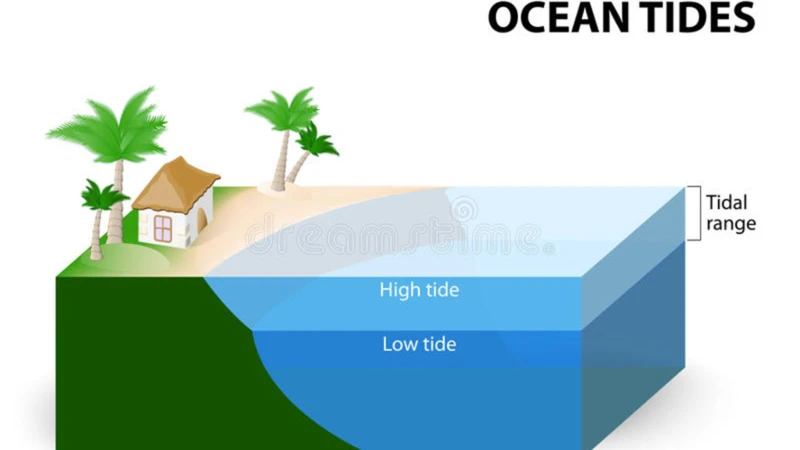
The Basics of Tides: Unveiling the Rhythm of the Ocean
Tides, those mesmerizing movements of the ocean that have captivated humanity since time immemorial, are a result of a delicate interplay between various factors. Understanding tides requires delving into the complex interactions between the gravitational forces exerted by the Moon and the Sun, the rotation of the Earth, and the unique topography of coastal regions. As the Moon orbits around the Earth, it exerts a gravitational pull on our planet’s waters, causing them to bulge and creating tidal bulges on opposite sides of the Earth. These tidal bulges, often referred to as high tides, result in a rhythmic rise and fall of the ocean’s surface. Additionally, the Sun also contributes to the tides, although to a lesser extent than the Moon. The alignment of the Earth, Moon, and Sun, as well as the Earth’s rotation, further determine the timing and intensity of tides. To fully comprehend this intricate dance of forces, let’s dive deeper into the relationship between lunar phases and tides, as well as the significance of spring and neap tides in shaping coastal landscapes.
1.1 Understanding Ocean Tides
Understanding ocean tides is key to unraveling the mystery behind this intriguing natural phenomenon. Tides refer to the rise and fall of the ocean’s surface caused by the gravitational forces exerted by the Moon and the Sun. The gravitational pull of the Moon primarily dominates the tides, due to its proximity to Earth. As the Moon orbits our planet, it exerts a gravitational force that causes the Earth’s waters to bulge. These bulges create high tides on opposite sides of the Earth, while areas between the bulges experience low tides. The Sun also contributes to tides, although its effects are less pronounced. The alignment of the Sun, Moon, and Earth greatly influences the intensity and timing of tides. When the Sun, Moon, and Earth align in a straight line, we experience spring tides, which are characterized by higher high tides and lower low tides. Conversely, during neap tides, which occur when the Sun and Moon form a right angle with the Earth, the tidal range is smaller. While understanding the basics of ocean tides may seem straightforward, their intricate relationship with celestial bodies and the Earth’s rotation adds a touch of complexity to this natural wonder. Ancient myths and legends from various cultures often incorporated the power of tides as a symbolic force, emphasizing the awe-inspiring nature of this captivating phenomenon.
1.2 The Role of Gravitational Forces
Within the intricate dance of tides, gravitational forces act as the main driving mechanism. These forces, primarily generated by the Moon’s proximity to Earth, create a gravitational pull on our planet’s waters, resulting in the rise and fall of tides. The Moon’s gravitational force affects different parts of the Earth to varying degrees, giving rise to what is known as tidal bulges. As the Moon orbits around the Earth, it creates two tidal bulges on opposite sides, one facing the Moon, and the other on the opposite side. These bulges cause the phenomenon of high tides. The position of the Moon in relation to the Earth and the Sun, as well as the tilt of the Earth’s axis, all play a crucial role in how these gravitational forces manifest. Interestingly, the Sun also exerts a gravitational force on Earth, but due to its greater distance, its impact on tides is not as significant as the Moon’s. The combination of these gravitational forces and the rotation of the Earth produces the mesmerizing ebb and flow of tides that shape our coasts. Understanding the role of gravitational forces is essential in unraveling the mysteries of tides and their profound influence on Earth’s ecosystems and human activities.
The Moon’s Gravitational Pull
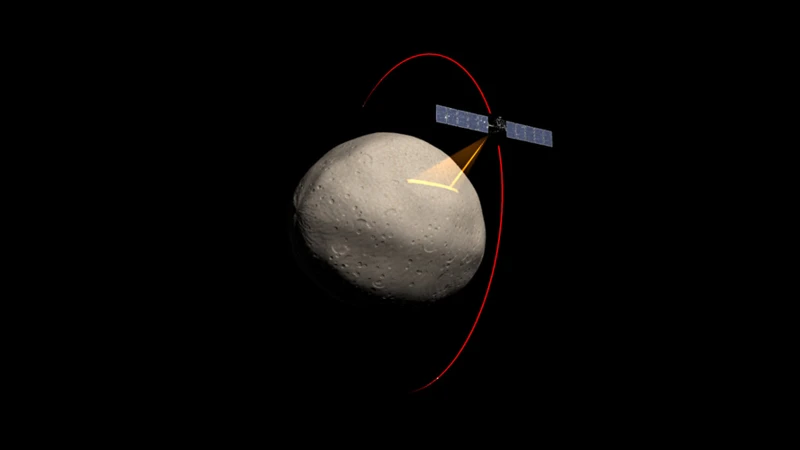
The Moon’s Gravitational Pull: Unleashing the Tidal Force
When it comes to the ebb and flow of the tides, one celestial body takes center stage – the Moon. Its gravitational pull on Earth is a driving force behind the rhythmic rise and fall of the ocean’s waters. As the Moon orbits our planet, its gravitational force exerts a powerful influence on Earth’s oceans, creating two tidal bulges on opposite sides of the planet. The side of the Earth facing the Moon experiences a high tide, known as the high water, while the opposite side, facing away from the Moon, also experiences a high tide, known as the opposite high water. This gravitational interaction not only affects the water bodies on Earth’s surface but also extends to the solid Earth itself, causing a subtle distortion known as Earth tides. These Earth tides can be observed in the form of small vertical movements in the Earth’s crust. The dynamic dance between the Moon and Earth’s tides is a testimony to the immense power of celestial bodies and their influence on our planet’s ever-changing seas.
2.1 Lunar Phases and Tides
Lunar Phases and Tides: Exploring the Connection Between the Moon’s Cycle and Oceanic Movements
The lunar phases play a pivotal role in the ebb and flow of Earth’s tides, offering a fascinating glimpse into the intricate relationship between our celestial companion and the oceans. As the Moon orbits the Earth, its gravitational pull influences the movement of our planet’s waters. During a new moon, when the Moon is positioned between the Earth and the Sun, the gravitational forces of both celestial bodies align, resulting in an intensified pull on the Earth’s oceans. This alignment creates what is known as a spring tide, characterized by higher high tides and lower low tides. Conversely, during a full moon, when the Moon and the Sun are on opposite sides of the Earth, the gravitational forces partially counteract each other. This leads to a lesser pull on the oceans, resulting in a neap tide, where the difference between high and low tides is less pronounced. The waxing and waning phases of the Moon also impact tides, with the highest high tides occurring during the first quarter and third quarter phases. This intricate interplay between lunar phases and tides not only shapes the rhythm of the oceans but also influences various ecosystems and human activities that depend on the tidal patterns. To further explore the relationship between the Moon and ancient myths, legends, and astrology, you can read more about the mythical creature, Ophiuchus.
2.2 Spring and Neap Tides
When exploring the fascinating world of tides, one cannot ignore the distinctive phenomena known as spring and neap tides. Spring tides occur when the alignment of the Earth, Moon, and Sun during a new moon or full moon creates a straight line. During these times, the gravitational forces of both the Moon and the Sun combine, resulting in exceptionally high tides known as spring tides. Conversely, neap tides occur when the gravitational forces of the Moon and the Sun work against each other, causing the low tides to be especially low and the high tides to be relatively less extreme. This occurs during the first and third quarters of the moon, when the Sun and Moon are at right angles to each other. The term “spring” in spring tides is derived from the concept of the tide “springing forth” or rising to the highest point. On the other hand, the term “neap” comes from the Middle English word “neep,” meaning “scanty” or “low.” It is important to note that spring and neap tides do not refer to the seasons, despite their names. Spring and neap tides play a crucial role in coastal ecosystems, as they influence the availability of food sources and affect the behavior of marine organisms. Additionally, these tidal variations have significant impacts on various human activities, including coastal navigation and fishing. Understanding the patterns and differences between these two tidal phenomena allows us to appreciate the intricate relationship between celestial bodies and the delicate balance of our oceans. To learn more about the power of opposing forces in nature, you can explore the power of oppositions in relationships and how they shape our world in different contexts.
The Sun’s Impact on Tides
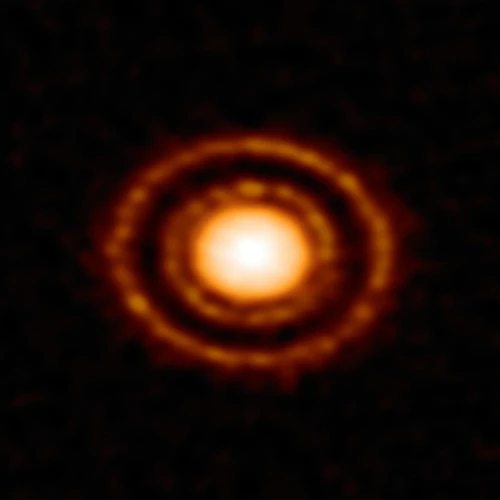
The Sun’s Impact on Tides: Unveiling the Celestial Interplay
While the Moon may take center stage in the realm of tides, the Sun also exerts its influence on our planet’s aquatic rhythms. The phenomenon of solar tides arises from the gravitational pull of the Sun on Earth’s waters, albeit on a lesser scale compared to the Moon. These solar tides occur simultaneously with lunar tides and play a role in shaping the coastal ebb and flow. When the Sun, Moon, and Earth align during a syzygy, as observed during a new moon or full moon, a phenomenon known as spring tides occurs. This alignment reinforces the gravitational forces exerted by both celestial bodies, resulting in higher high tides and lower low tides. Conversely, during a quadrature phase, experienced during the first and third quarters of the lunar cycle, the gravitational forces of the Sun and Moon partially cancel each other out, leading to less pronounced tidal movements, known as neap tides. Thus, the Sun’s presence in the tidal equation adds another layer of complexity to the mesmerizing interplay between celestial bodies and the aquatic world they govern.
3.1 Solar Tides and Lunar Tides
3.1 Solar Tides and Lunar Tides
The tides on Earth are not solely influenced by the Moon; the Sun also plays a role in shaping our coastal waters. While the gravitational pull of the Moon is approximately twice as strong as that of the Sun, the Sun’s massive size compensates for its weaker gravitational force, leading to noticeable solar tides. These solar tides interact with lunar tides to create a complex tidal system. During a new moon or a full moon, the gravitational forces of the Moon and the Sun align, resulting in the highest tides known as spring tides. Conversely, during a first quarter or a third quarter moon, the gravitational forces of the Moon and the Sun work against each other, causing lower tides known as neap tides. This intricate interplay between solar and lunar forces produces a fascinating pattern of tidal variations, influencing the ebb and flow of coastal waters. The combined effects of solar and lunar tides have a profound impact on our marine ecosystems, coastal communities, and even navigation systems. Understanding this intricate relationship between solar and lunar forces is crucial for comprehending the complex dynamics of tides and their far-reaching consequences.
3.2 Syzygy and Quadrature
3.2 Syzygy and Quadrature: Understanding the Alignment of Celestial Bodies
In the realm of tidal forces, the concepts of syzygy and quadrature hold significant importance. Syzygy occurs when the Earth, Moon, and Sun align in a straight line, creating a configuration that amplifies the gravitational forces at play. During syzygy, we observe the spring tides, where the high tides are exceptionally high, and the low tides are particularly low. This alignment occurs during the new moon and full moon lunar phases, when the Moon either directly opposes or aligns with the Sun. On the other hand, quadrature represents a scenario where the Moon and the Sun are at right angles to each other concerning the Earth. During quadrature, neap tides occur, characterized by lower high tides and higher low tides. These phases occur during the first quarter and third quarter lunar phases, when the Moon is at a 90-degree angle to the Sun as observed from Earth. The shifts in gravitational forces caused by syzygy and quadrature have far-reaching effects on coastal ecosystems, navigation, and human activities dependent on tidal patterns. Understanding these celestial alignments is crucial in deciphering the ebb and flow of Earth’s tides and their impact on our planet’s intricate web of life.
Effects of Tides on Ecosystems
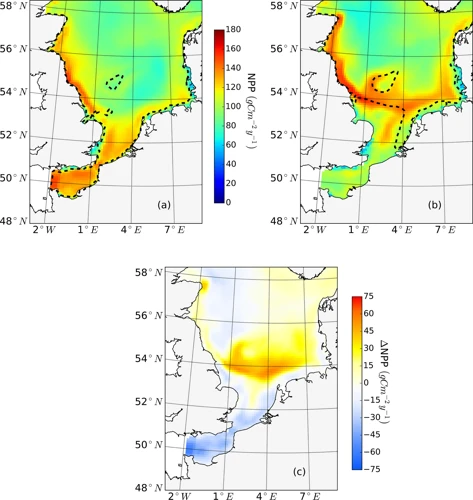
Effects of Tides on Ecosystems: Nature’s Dance of Life and Biodiversity
The ebb and flow of tides not only create a mesmerizing spectacle but also play a crucial role in shaping coastal ecosystems and supporting a rich diversity of life. Coastal areas experience a dynamic range of environments due to the constantly changing tides, leading to the formation of unique habitats known as intertidal zones. These zones are home to a remarkable array of organisms that have evolved specific adaptations to thrive in the challenging conditions of tidal environments. From resilient algae and barnacles to agile crabs and foraging birds, the intertidal zone acts as a bustling hub of ecological interactions and provides a refuge for a myriad of species. Beyond their role in providing habitat, tides also have a significant impact on nutrient cycling. With the ebb and flow of the tides, nutrients from the ocean are transported inland, nourishing coastal ecosystems and supporting the growth of algae and other primary producers. This, in turn, fuels the food web, sustaining populations of fish, marine mammals, and seabirds that rely on these productive coastal areas. The intricate connection between tides and ecosystems highlights the vital role that these rhythmic movements play in maintaining biodiversity and supporting the delicate balance of coastal ecosystems.
4.1 Intertidal Zones and Biodiversity
Intertidal zones, the areas between the highest and lowest tides along the coastline, are incredibly dynamic and diverse habitats that play a vital role in supporting a rich array of marine life. Spanning a range of environments, from rocky shores to sandy beaches and mudflats, these zones are characterized by their unique ecological conditions, constantly transitioning between periods of exposure and submersion. The fluctuating tides expose organisms inhabiting these zones to a challenging existence, where they must adapt to extreme variations in temperature, salinity, and moisture levels. Despite the harsh conditions, intertidal zones are home to a remarkable biodiversity of species that have evolved remarkable adaptations to survive. Here, you can find a fascinating array of organisms, including colorful tide pool inhabitants like anemones, sea stars, and hermit crabs. Algae, barnacles, and mollusks cling to rocky surfaces, while burrowing worms, clams, and sand dollars can be spotted in muddy substrates. The dynamic nature of the intertidal zones, with the ebb and flow of tides, creates diverse microhabitats, offering niches for various species to thrive. This bustling ecosystem not only serves as a valuable feeding ground for marine animals but also plays a crucial role in nutrient cycling and providing critical breeding and nursery grounds for many marine organisms. The intertidal zones, with their stunning biodiversity and ecological functions, remind us of the interconnectedness and beauty of nature’s intricate tapestry along our coastlines.
4.2 Tidal Energy and Nutrient Cycling
Harnessing the power of tides for energy generation has become an increasingly popular concept in recent years. Tidal energy, also known as tidal power, is the process of converting the kinetic energy of tidal currents into usable electricity. The ebb and flow of tides create a consistent and predictable source of energy that can be harnessed through various technologies such as tidal barrages, tidal turbines, and tidal fences. These methods utilize the movement of water during tidal cycles to spin turbines and generate electricity. The potential for tidal energy is vast, with the ability to provide a sustainable and renewable source of power without the reliance on fossil fuels.
In addition to its energy-generating potential, tides also play a crucial role in nutrient cycling within coastal ecosystems. When tidal currents flow in and out, they carry with them a rich abundance of nutrients, sediments, and organic matter. These nutrients provide essential nourishment for marine plants and animals that reside in intertidal zones, estuaries, and marshes. The constant mixing and exchange of nutrients during tidal cycles support the growth and productivity of these ecosystems.
Tidal currents aid in the dispersal of larvae and other propagules of marine organisms. The movement of water during tidal cycles helps transport these organisms to new habitats, contributing to genetic diversity and promoting the establishment of new populations. Nutrient-rich tides also attract a variety of species, including migratory birds and fish, seeking food sources during specific tidal phases.
It is important to recognize and understand the delicate balance between tidal energy extraction and the ecological impacts on nutrient cycling. While tidal energy presents a clean and renewable resource, careful planning and monitoring are necessary to mitigate any potential negative effects on ecosystem dynamics. By finding a sustainable balance, we can harness the power of tides while preserving the intricate interplay of nutrient cycling that supports the health and productivity of coastal ecosystems.
Tides and Human Activities
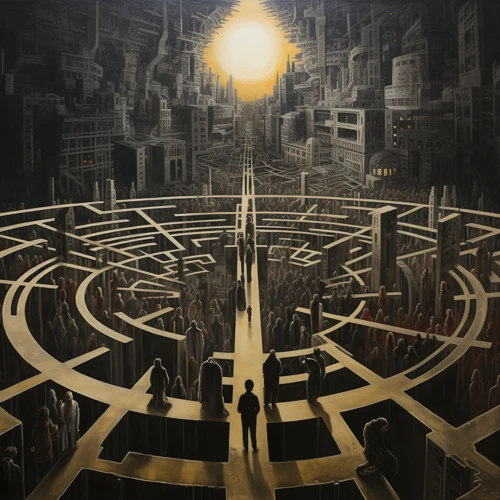
Tides and Human Activities: Exploring the Symbiotic Relationship
Tides, with their ebb and flow, hold a profound influence on various human activities, particularly those closely tied to coastal regions. Fishermen have long relied on their understanding of tide patterns to maximize their daily catch. The rise and fall of tides determine the accessibility and abundance of certain fish species, guiding fishermen in selecting the perfect time to cast their nets. Likewise, navigation in tidal channels heavily relies on understanding the changing water levels associated with high and low tides. Tidal currents impact the maneuverability of ships and boats, making it essential for sailors to navigate these channels with meticulous planning and awareness of tidal cycles. Besides their direct impact on fishing and navigation, tidal patterns also play a pivotal role in coastal recreation, such as water sports and beach activities. By providing dynamic environments for surfers, paddleboarders, and beachcombers alike, tides enhance the recreational experiences of coastal dwellers and visitors. The interconnectedness between tides and human activities underscore the importance of understanding and respecting the natural rhythms of our planet’s oceans.
5.1 Fishing and Tide Patterns
Fishing enthusiasts know that understanding tidal patterns is crucial for a successful day out on the water. Tides greatly influence the behavior and availability of fish, making it essential to plan fishing trips around different tide stages. During incoming tides, when water levels are rising, predatory fish often move closer to shore in search of food that gets carried with the rising water. This presents an excellent opportunity for anglers to target species such as snook, redfish, and striped bass. On the other hand, outgoing tides, when water levels are receding, can concentrate fish in certain areas, such as tidal channels or deep holes, as they follow the outgoing current. This is a prime time to target bottom-dwelling species like flounder or to try your luck at catching species that feed on other fish, such as jacks or tarpon. It’s important to note that the timing and intensity of tidal movements can vary depending on the location and local geography, so consulting tide charts or using fishing apps that provide real-time tide data can greatly enhance your fishing success. By understanding the intricacies of tide patterns and how they influence fish behavior, anglers can increase their chances of reeling in that prized catch.
Navigation in coastal areas is greatly influenced by the presence of tidal channels, which are waterways that are strongly affected by tidal currents. These channels serve as crucial routes for ships and boats, facilitating transportation and trade in coastal regions. Tidal channels are formed due to the interaction of tidal forces with the local topography, creating narrow passages where water flows in and out with the rhythm of the tides. Careful navigation becomes essential in these areas, as the strength and direction of tidal currents can significantly impact the movement of vessels. Mariners must study tidal charts and consult tide tables to plan their journeys effectively, taking into account the currents and avoiding potential hazards such as strong eddies or turbulent waters. It is also important to be mindful of the changing depths caused by tidal variations, as channels may become inaccessible or pose increased risks during low tides. In some cases, navigation through tidal channels may require the expertise of local pilots or the use of specialized navigational aids such as beacons or buoys. Understanding the complex dynamics of tidal channels is vital for safe and efficient navigation along coastal areas.
Conclusion
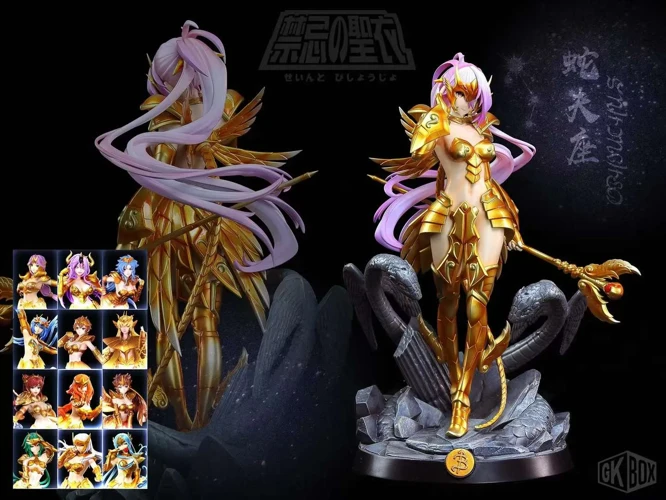
Conclusion: Marveling at the Eternal Dance of Tides
In conclusion, the influence of the Moon on Earth’s tides is a captivating phenomenon that intertwines the celestial and aquatic realms in an eternal dance of gravity. Through the gravitational pull exerted by the Moon, tides are created, resulting in the rhythmic rise and fall of ocean waters. Lunar phases play a significant role in shaping the intensity and timing of tides, with full and new moons causing higher tidal ranges during spring tides, while quarter moons contribute to neap tides with lower tidal ranges. The Sun, although less influential than the Moon, also plays a role in tides, especially during times of syzygy and quadrature. These tidal movements have significant effects on ecosystems, particularly in intertidal zones where diverse marine life thrives, and the exchange of nutrients is vital for sustaining coastal ecosystems. Furthermore, tides also impact human activities such as fishing and navigation, as their patterns can determine the best times for fishing and influence the navigation of tidal channels. The eternal dance of tides, governed by the Moon and the Sun, continues to fascinate and inspire us as we marvel at the intricate interconnectedness of Earth and the cosmos. Through understanding the influence of the Moon on tides, we gain a deeper appreciation for the rhythms and cycles that shape our planet and the countless lives that depend on this eternal ebb and flow.
Frequently Asked Questions

1. How are tides created?
Tides are created by the gravitational forces exerted by the Moon and the Sun on the Earth’s oceans. The Moon’s gravitational pull is the primary driver of tides, while the Sun’s influence is secondary due to its greater distance.
2. What causes high and low tides?
High tides occur when the ocean bulges towards the Moon due to its gravitational pull, creating a rise in sea level. Low tides, on the other hand, occur when the ocean bulges away from the Moon, resulting in a drop in sea level.
3. How do lunar phases affect tides?
Lunar phases play a vital role in determining the height and timing of tides. During full and new moons, when the Earth, Moon, and Sun are aligned, we experience higher high tides, known as spring tides. First and third-quarter moons, when the Moon and Sun form a right angle, result in lower high tides, called neap tides.
4. What is the difference between spring tides and neap tides?
Spring tides have the highest high tides and the lowest low tides. They occur during the new and full moon phases. Neap tides, on the other hand, have the lowest high tides and the highest low tides. They occur during the first and third-quarter moon phases.
5. Do tides only affect coastal areas?
No, tides can have a profound impact beyond coastal regions. They can influence the movement of water in estuaries, rivers, and bays, affecting wildlife habitats, shipping routes, and even groundwater levels in coastal aquifers.
6. Can tides affect marine life?
Yes, tidal changes can significantly impact marine ecosystems. Many organisms, such as intertidal creatures, rely on the ebb and flow of tides to survive. Tides also influence nutrient availability, feeding patterns, and the migration of certain species.
7. How do tides impact human activities?
Tides play a crucial role in various human activities. Commercial fishing, for example, often depends on certain tidal patterns to maximize catch rates. Tidal currents also influence navigation in tidal channels, ports, and harbors.
8. Can tides generate renewable energy?
Yes, tidal energy is a form of renewable energy that harnesses the power of moving water during tides. Tidal energy systems, such as tidal turbines or barrages, can generate electricity by converting the kinetic energy of tidal currents into usable power.
9. Are all tides the same worldwide?
No, tides can vary depending on the geographical location and the local topography of an area. Factors such as the shape of coastlines, depth of water, and underwater topography can influence the height and timing of tides in different regions.
10. Is there a connection between astrology and tides?
While ancient cultures often associated celestial movements with natural phenomena, there is no scientific connection between astrology and tides. The gravitational forces of the Moon and Sun are the main factors behind tidal patterns, and they operate independently of astrological beliefs.
References
Frequently Asked Questions

How do tides form?
Tides are formed as a result of the gravitational pull of celestial bodies, such as the Moon and the Sun, on the Earth’s oceans.
What causes the ocean tides?
Ocean tides are primarily caused by the gravitational forces exerted by the Moon and, to a lesser extent, the Sun.
How does the Moon influence Earth’s tides?
The Moon’s gravitational pull is the main force responsible for tides. The gravitational attraction between the Moon and Earth causes the water in the oceans to be pulled towards the Moon, creating tidal bulges.
Do tidal patterns change with the phases of the Moon?
Yes, tidal patterns change with the phases of the Moon. During the full moon and new moon phases, the gravitational pull of the Moon and the Sun align, leading to higher high tides and lower low tides, known as spring tides.
What are spring and neap tides?
Spring tides occur during the new moon and full moon phases when the gravitational forces of the Moon and the Sun align, causing higher high tides and lower low tides. Neap tides, on the other hand, occur during the first and third quarter moon phases and result in lower high tides and higher low tides.
How does the Sun impact tidal patterns?
The Sun’s gravitational pull also contributes to the formation of tides. Although its force is weaker than the Moon’s, it causes a secondary tidal effect. When the Sun, Moon, and Earth align, the combined gravitational forces lead to higher high tides and lower low tides.
What is the relationship between lunar and solar tides?
Lunar tides, caused by the Moon’s gravitational pull, are the primary drivers of ocean tides. Solar tides, influenced by the Sun’s gravitational pull, have a secondary effect and further modify tidal patterns.
What is the impact of tidal patterns on intertidal zones?
Tidal patterns play a crucial role in shaping intertidal zones. The constant ebb and flow of tides expose these zones to alternating periods of submersion and exposure, creating unique habitats and supporting rich biodiversity.
Can tides affect nutrient cycling in marine ecosystems?
Yes, tides play a significant role in nutrient cycling in marine ecosystems. Tidal movements help distribute nutrients, sediments, and organic matter, ensuring the availability of resources for various organisms and facilitating overall ecosystem productivity.
How do tides impact fishing activities?
Tides greatly influence fishing activities. Many fish species follow tidal patterns, concentrating in certain areas during specific tidal phases. Understanding these patterns helps fishermen optimize their catch by choosing the right time and location to fish.







